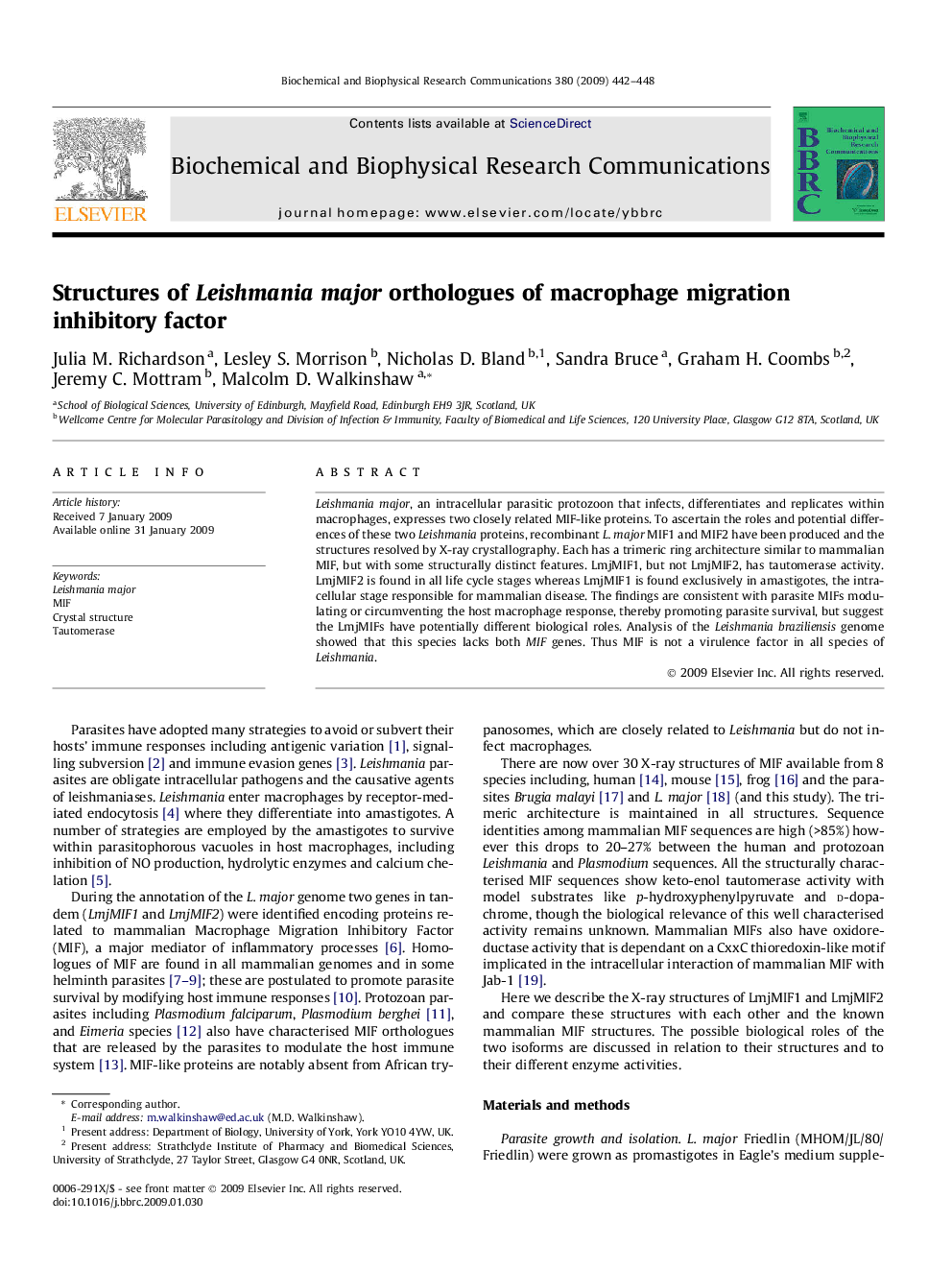| Article ID | Journal | Published Year | Pages | File Type |
|---|---|---|---|---|
| 1933880 | Biochemical and Biophysical Research Communications | 2009 | 7 Pages |
Leishmania major, an intracellular parasitic protozoon that infects, differentiates and replicates within macrophages, expresses two closely related MIF-like proteins. To ascertain the roles and potential differences of these two Leishmania proteins, recombinant L. major MIF1 and MIF2 have been produced and the structures resolved by X-ray crystallography. Each has a trimeric ring architecture similar to mammalian MIF, but with some structurally distinct features. LmjMIF1, but not LmjMIF2, has tautomerase activity. LmjMIF2 is found in all life cycle stages whereas LmjMIF1 is found exclusively in amastigotes, the intracellular stage responsible for mammalian disease. The findings are consistent with parasite MIFs modulating or circumventing the host macrophage response, thereby promoting parasite survival, but suggest the LmjMIFs have potentially different biological roles. Analysis of the Leishmania braziliensis genome showed that this species lacks both MIF genes. Thus MIF is not a virulence factor in all species of Leishmania.
